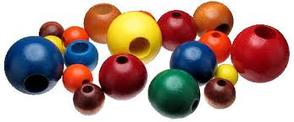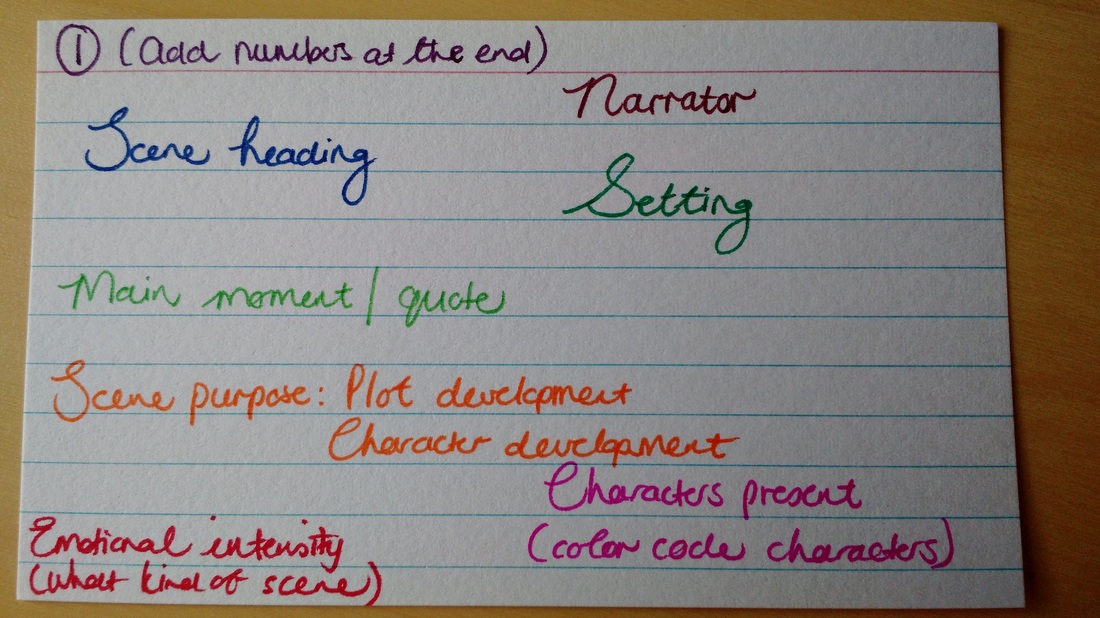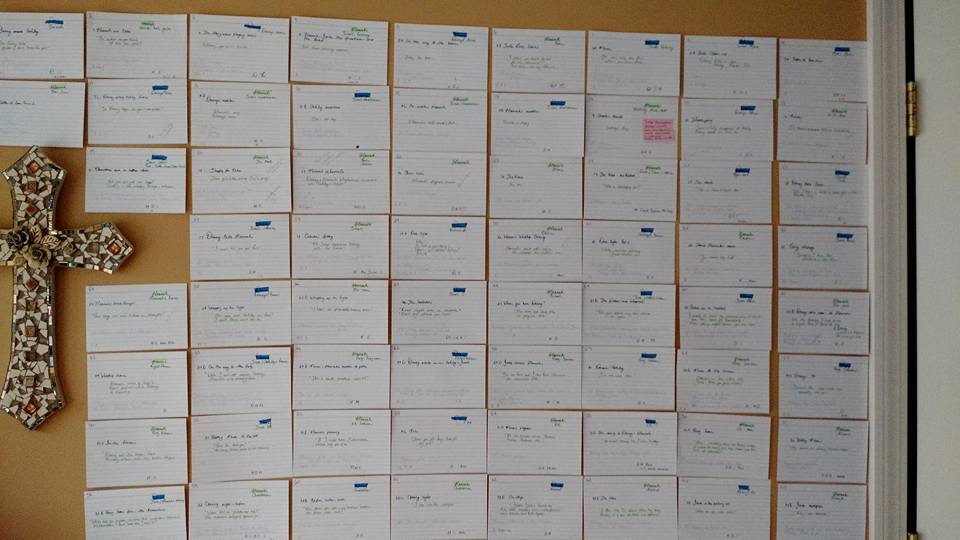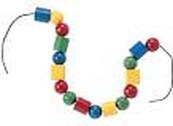 ~ by Amanda Smith Last week we focused on using basic plotting techniques to help organize scenes that were random and unconnected, like a hand full of beads. If you missed last week's post, you can find it here. What if you're done drafting, though? Does that mean you have no more use for plotting techniques? Writers often use note cards to block out scenes. For me the note card technique worked well after I finished my second draft. I combined the information from a mapping workshop, taught by Katie L. Caroll (Elixer Bound) and a workshop on non-sequential writing by Lynda Mullaly Hunt. (One for the Murphys, Fish in a Tree) to come up with a note card that served my purpose for revision.
These note cards against my wall helped me see the entire novel at one glance. I was able to check the balance and switch-off between narrators. Imagine my joy when I realized my main characters narrate exactly the same amount of scenes! These cards showcased the rising action, emotional arc, and the function of each scene. I could see where to change the order of scenes to build tension or give a breather. They showed where to add a scene or when a character fell out of the story. As I studied these cards, I was able to make subtle changes to strengthen the plot. I added bits of dialogue or "what ifs" on sticky notes. When I went back to my manuscript I could try out these new takes to see if they worked better. The note cards served as a place for ideas and thoughts to land when I couldn't get to my manuscript right that moment. Revision time is also a good stage to implement character interviews, another plotting technique. There are multiple character interviews online that you can tweak to meet your needs. After filling out interview questions, add descriptors and specifics to enhance characters, and check for character consistency. I found it very enlightening to also interview all secondary characters. Going back and adding the smallest of details can enrich secondary characters and make them feel like real people.
Many authors have a treasure trove of plot development strategies on their websites. Don’t feel overwhelmed by them. Take these plotting devices and adapt them to work for you and your process. And it is a process! Use some before you start, some during drafting, and some during revisions until all your scenes are perfectly placed like beads on a string.
1 Comment
Noel Csermak
5/19/2016 04:31:59 pm
Wonderful post that provides specifics that can only enhance our writing experience. Thank you for the encouragement and for sharing some of your experiences. Little steps will complete the journey!
Reply
Leave a Reply. |
Peruse blogs for advice and tips from KidLit creatives.
Categories
All
Archives
April 2024
Click to set custom HTML
Click on the RSS Feed button above to receive notifications of new posts on this blog.
|



 RSS Feed
RSS Feed